- Home
- Hugh Howey
Machine Learning: New and Collected Stories
Machine Learning: New and Collected Stories Read online
Contents
* * *
Title Page
Contents
Copyright
Dedication
Foreword by Jamie Ford
Introduction
Aliens and Alien Worlds
The Walk up Nameless Ridge
Second Suicide
Nothing Goes to Waste
Deep Blood Kettle
Artificial Intelligences
Machine Learning
Executable
The Box
Glitch
Silo Stories
In the Air
In the Mountain
In the Woods
Fantasy
Hell from the East
The Black Beast
The Good God
Algorithms of Love and Hate
The Automated Ones
Mouth Breathers
While (u > i) i- -;
Virtual Worlds
The Plagiarist
Select Character
Lost and Found
Promises of London
Peace in Amber
Acknowledgments
Read More from John Joseph Adams Books
About the Author
Connect with HMH
Copyright © 2017 by Hugh Howey
Foreword copyright © 2017 by Jamie Ford
All rights reserved
For information about permission to reproduce selections from this book, write to [email protected] or to Permissions, Houghton Mifflin Harcourt Publishing Company, 3 Park Avenue, 19th Floor, New York, New York 10016.
www.hmhco.com
Library of Congress Cataloging-in-Publication Data is available.
ISBN 978-1-328-76753-0 (hardcover)
ISBN 978-1-328-76752-3 (pbk.)
ISBN 978-1-328-76433-1 (ebook)
Cover design by M. S. Corley
Cover images © Shutterstock
v1.0917
The following stories previously appeared elsewhere, in slightly different form: “The Walk up Nameless Ridge” on Amazon.com as part of the Kindle Singles program, September 2012; “Second Suicide” on Amazon.com as part of the Kindle Singles program, July 2014; “Nothing Goes to Waste” on hughhowey.com, 2009; “Deep Blood Kettle” in Lightspeed Magazine, April 2013; “Executable” in The End: Visions of Apocalypse, compiled and edited by N. E. White, 2012; “The Box” on Amazon.com as part of the Kindle Singles program, May 2015; “Glitch” on Amazon.com as part of the Kindle Singles program, June 2014; “In the Air” in The End Is Nigh, edited by John Joseph Adams and Hugh Howey, March 2014; “In the Mountain” in The End Is Now, edited by John Joseph Adams and Hugh Howey, September 2014; “In the Woods” in The End Has Come, edited by John Joseph Adams and Hugh Howey, May 2015; “Hell from the East” in Dead Man’s Hand, edited by John Joseph Adams, Titan Books, May 2014; “The Black Beast” on hughhowey.com, 2011; “The Automated Ones” on hughhowey.com, 2009; “Mouth Breathers” on hughhowey.com, 2009; “WHILE (u > i) i- -;” on hughhowey.com, 2009; “The Plagiarist” on Amazon.com as part of the Kindle Singles program, May 2011; “Select Character” first published in Press Start to Play, edited by Daniel H. Wilson and John Joseph Adams, Vintage Books, Copyright © 2015 by Hugh Howey; “Promises of London” on Amazon.com as part of the Kindle Singles program, May 2014.
“Peace in Amber” first published in The World of Kurt Vonnegut: Peace in Amber (Kindle Worlds Short Story) by Hugh Howey, reprinted under a license arrangement originating with Amazon Publishing, www.apub.com. Copyright © 2014 by Hugh Howey.
For Mom and Dad
Foreword
As I sit at my desk writing this, Hugh is sailing around the world.
Like many of his friends, I follow his travels with no small degree of admiration, satiating my own twitching wanderlust vicariously through his seaborne adventures from South Africa, to New York, to Cuba, and on to the Panama Canal.
I smiled along with his legions of fans as he sent out a call via Facebook for a potential crew member—someone to help out as he crosses the Pacific:
Looking for someone who can teach me Spanish and how to play piano. Must be an expert backgammon and chess player. Likes cheese and wine. Plays video games and operates a camera in manual mode. Enjoys yoga, paddleboarding, and billiards. Takes brief showers. Sailing experience not required.
Unsurprisingly, there were literally hundreds of eager and willing sea dogs of every stripe volunteering for that daunting (and potentially dangerous) leg of his journey.
As I read the comments, I couldn’t help but stare out the window at a snow-covered field here in Montana, where the temperature was just inching up to zero. I remembered Hawaii, where I’d once lived for six years. I recalled countless weekends spent aboard a friend’s boat, on the leeward side of Oahu, diving with reef sharks, sea turtles, and schools of wrasse and butterfly fish.
Then I remembered a long day, standing on the bow pulpit, turning green in high surf.
I returned to the online discussion, adding, “You would get bored watching me barf over the rail.”
Hugh replied, “I would never tire of that.”
That’s Hugh, the kindest, most joyful contrarian you’ll ever meet.
Where some people are antagonistic by nature—loving to argue for the sake of cruel, intellectual sport, or rebelling against convention just to play the devil’s advocate—Hugh is a completely different kind of contrarian. He just naturally sees what most people don’t. He recognizes patterns of human behavior and instinctively moves in the opposite direction, with eyes wide-open, exploring.
As a writer, he manages to somehow divorce himself from the preconceived notions most of us wear like millstones around our necks for the balance of our waking lives.
This was evident as we had breakfast a few years ago in Milan, Italy—where our separate book travels happened to intersect. I remember how talking to Hugh about writing, publishing, politics, religion, artificial intelligence, and human sexuality was like discovering things all around me that I didn’t know were there.
He left me scratching my head, asking myself, “How did I not notice?”
That’s what reading this collection is like.
These stories feel like going back to your childhood home and discovering there are secret rooms you’ve never explored.
Some of these rooms are unique expressions of artificial intelligence—not the broad AI overlords that typify speculative fiction, but tales of narrow AI discovering itself, seeking purpose, and, dare I say, enlightenment. Stories like “Machine Learning” and “Glitch” will leave you revisiting your ideas of intelligence and broadening your concept of humanity.
While other rooms in this collection are devoted to alien worlds, observed from 62,000 feet above, in “The Walk up Nameless Ridge.” Or Earth, seen through the eyestalks of tentacled soldiers—the grunts who make up an invading armada in “Second Suicide.”
There are rooms devoted to dark fantasy like “Hell from the East,” and waiting rooms for desperate and benevolent deities in “The Good God,” and the all-too-spacious loneliness of virtual worlds in “The Plagiarist.” And there are rooms that stretch our concepts of love when augmented by technology, time, and space with “WHILE (u > i) i- -;” and “The Automated Ones.”
Of course, there’s the big, deep room devoted to Silo, the epic world Hugh has created and open-sourced to his fans and aspiring fantasists. Rather than tease us with alternative characters we hardly know, he serves up his main protagonist, Jules. (I’d say more, but I don’t want to spoil anything—read on and you’ll understand.)
Finally, there is the soul-baring masterpiece
of “Peace in Amber,” a Hugh Howey story interlaced with Kurt Vonnegut’s world of Slaughterhouse-Five. This is a story based in real emotional pain and loss—the vulnerability of this novelette is its strength. Its honesty—its gritty reality—is what propels this fantastic, surreal journey. It’s one of the most heartbreaking and satisfying stories I’ve ever read.
So when asked to write a foreword for this collection, I was honored and a bit tongue-tied, honestly. (Picture Garth from Wayne’s World bowing and exclaiming: “I’m not worthy!”) But I knew that I’d get to read many of these stories all over again, plus the new ones—which was like a system upgrade for my brain, for my imagination.
The experience was so profound and enlightening, it almost had me imagining being on Hugh’s catamaran, Wayfinder, standing at the helm, crossing the Pacific, watching the sunrise, somehow not turning green.
Almost.
Jamie Ford
Great Falls, Montana
January 2017
Introduction
I’ve always wanted to be a truck driver. For years, this felt like what I should be doing with my time. I tried to convince a girlfriend once to quit school so we could be a long-haul team and crisscross the United States in a Peterbilt. The hours and hours of staring at the horizon appeals to me, the time to get lost in one’s thoughts, the self-contained world of sleeper cabs, some mechanical issue that always needs fixing, the roadside diners full of colorful characters.
It took me a while to realize what I really wanted was to be Han Solo, who long ago drove a big rig named the Millennium Falcon all over a galaxy far, far away. I saw Star Wars when I was very young, and I’ve wanted to be Han Solo ever since. A vagabond with a personality type that role-playing peeps would recognize as chaotic good (the sort of person who breaks rules, but in the name of serving a moral purpose). Sadly, my girlfriend was not enthused with the idea and decided to stay in school. (Pro tip: Don’t let someone you date think they’d make a wonderful Wookiee.)
The truck driver dream was put on hold, but it didn’t die. In college, I met a ballet dancer who lived on a small sailboat in Charleston Harbor. I had no idea people did such a thing. The small boat was like my beloved sleeper cabs, but afloat. I immediately started searching and found a boat I could afford several states away. I read a few books on ocean navigating and then nearly got my best friend and myself killed sailing around Cape Hatteras in a winter norther.
But I had my Falcon at last. And as the semesters dragged on, the horizon beckoned. I couldn’t just sit still; there was too much out there to see. So I dropped out of college after my junior year and made my way to the Bahamas. What I discovered there is a world completely alien from the life I left behind. A world of salty retirees, wannabe pirates, and clashing cultures. Here were all these little clumps of vagabonds bouncing off one another, swapping stories, borrowing tools, trading tips. I was young and broke and would scamper up masts or dive below keels to do jobs other boat owners didn’t enjoy. In exchange, I was given plates of food, which I scarfed down between grunts of gratitude. My hair grew long, I became scruffy, and I probably smelled like a nerf herder. I was becoming Chewbacca.
When the money ran out, I got work on other people’s boats. They started small, but someone would ask if I could drive a bigger boat, and I figured the general principles were the same. This was a very surreal transition in my life. I went from a half-starved kid on a twenty-seven-foot sailboat with no toilet and no shower to a clean-shaven guy in pressed uniforms who drove mega-yachts for the mega-wealthy. These boats had hot tubs on top and garages full of smaller boats in their bellies. The helms looked like spaceships, like the cockpit of a jetliner on steroids. I moved these large machines from one place to another and fixed anything that broke along the way. I had found my truck-driving job at last!
The next decade of my life was spent on yachts like this. Much of that time I sat at the helm and stared at the horizon, lost in my thoughts. Hours and hours of horizons and daydreams. Night shifts with stars so bright, you could read by them. Flat seas that reflected these pinpricks until I was surrounded by stars, floating in deep space. With these years of staring at the horizon, I realized that my fascination with the future and my inability to sit still come from the same insatiable curiosity: I want to know what’s around the corner. I strain for it, not content for it to come to me. The futurist and the vagabond are the same souls—one in body and the other in thought.
My love of science fiction comes from the same place. With science fiction, we dream about what’s around the corner. We use the genre as a warning, or as a way to explore time, space, and progress. The same people who crossed seas in bygone eras, or rode wagons out west, or put men on the moon are now dreaming about humanity on Mars and beyond. These are probably the same tinkerers who fashioned better spear points or learned to sew and make fire. What’s next? What’s out there? These questions haunt me.
The stories you’re about to read are my attempts to answer these questions. Many of them were written during a sedentary period of my life, while I was working in a bookstore and writing my first novels. There are recurring themes here that I was dimly aware of when I was writing them but have become stark now that they’ve been collected into one place. A couple of these stories are new. The rest have been published in so many scattered ways and places that I doubt anyone has seen them all before.
When I look at this body of work, and the more than a dozen novels I’ve written, I feel once again like that kid at the helm of a boat much too large for his qualifications. I honestly don’t understand how I’ve gotten here. One step at a time, I suppose. One sentence after the other. One daydream, one idea, an early morning writing before I have to go to work . . . and eventually you get to a place that might’ve humbled me if I’d thought about it all at once.
My sailing trip around the world has progressed much the same way. Besides wanting to be a truck driver (or Han Solo), I’ve had two impossible fantasies at the very top of my bucket list. One was to write a novel; the other was to sail around the world. As I write this in March 2017, I’m sitting on my boat off of Isabela Island in the Galápagos. I sailed here from South Africa, going as far north as Maine, spending a month in Cuba, and just recently crossing through the Panama Canal. I’m halfway through my voyage, and what seemed unlikely in the whole has been slowly achieved one horizon at a time.
And isn’t this true for humanity at large? We live in a world not of science fiction, but of science fact. I will upload this introduction to my publisher via the ether. I live on a solar-powered machine not much less remarkable than the Millennium Falcon. When I look at gleaming cityscapes of glass towers touching the clouds, it strikes me that a band of several hundred primates spread out and built all of this from what we dug out of the mud. Out of the mud.
Is it possible to doubt where we might go, seeing how far we’ve come? We do the impossible daily. We are creeping ever toward that unreachable horizon. I wonder what we’ll find when we get there.
Aliens and Alien Worlds
The Walk up Nameless Ridge
1
It was difficult to sleep at night, wishing good men dead. This was but one of the hurtful things I felt in my bones and wished I could ignore. It was an ugly truth waving its arms that I turned my gaze from, that I didn’t like to admit even to myself. But while my bag warmed me with the last of its power and my breath spilled out in white plumes toward the roof of our tent, while the flicker of a whisper stove melted snow for midnight tea, I lay in that dead zone above sixty thousand feet and hoped not just for the failure of those above me, but that no man summit and live to tell the tale. Not before I had my chance.
It was a shameful admission, one I nearly raised with Hanson, my tent mate, to see in the wrinkles of his snow-beat face whether this was a guilt shared. I suspected it was. In the mess tents and around the yellow craters we dubbed latrines, the look among us was that only one would be remembered. The rest would die alone in the sn
ow or live a long life forgotten—and not one of us would’ve been able to explain to a child the difference. Frozen to death by altitude or by time was all the same. The truth was this: History remembers the first, and only the first. These are the creeping and eternal glaciers, the names etched across all time like scars in granite cliffs. Those who came after were the inch or two of snowdrift that would melt in due time. They would trickle, forgotten, into the pores of the earth, be swallowed, and melt snow at the feet of other forgotten men.
It was a quarter past Eno’s midnight and time to get up. If Shubert and Humphries were to make it to the top, they likely would’ve by now. If any of their gear still worked, they would be radioing in their victory, taking the first pictures of starlit peaks wrinkling far past the limits of sight. By now, they would know how many fingers and toes it cost them, how much oxygen was left in their tanks, whether or not they would live to speak of the mountain’s conquest.
The faint odor of tea penetrated my dark thoughts. It must’ve been a potent brew to smell it at all. We had already scaled beyond the heights where taste and scent fade to oblivion. One had to remind himself to eat and drink, for the stomach is one of those organs that knows when to quit. It is the first, in fact, to go. The mind of the climber is the last.
Hanson brought me tea. I wormed a single arm out into the cold, though my heating bag had become a feeble thing. I did not want to lose what little it held. I coughed into my fist, that persistent cough of the dead zone, and accepted the steaming mug.
There were no words spoken as we forced ourselves to drink. Every twitch was an effort at those altitudes. We were sleeping higher than all the fabled peaks of Cirrus VII. Our fourth camp along the Slopeson Ridge, at 42,880 feet, was higher than any speck of dirt on Hanson’s home planet. And when we arrived on this wasteland of a frozen ball, out here in a corner of the galaxy where men go either to not be found or to be remembered for all time, we set up a base camp very near to the highest peak of the place I grew up: Earth. Where men were first born and first began to scale to deadly heights.

 Refuse (The Silo Archipelago Series Book 1)
Refuse (The Silo Archipelago Series Book 1) Second Suicide: A Short Story
Second Suicide: A Short Story Machine Learning: New and Collected Stories
Machine Learning: New and Collected Stories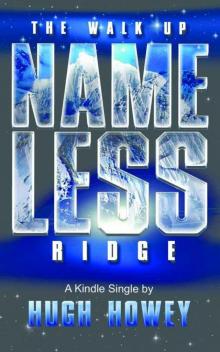 The Walk Up Nameless Ridge
The Walk Up Nameless Ridge Half Way Home
Half Way Home The Plagiarist
The Plagiarist Peace in Amber
Peace in Amber First Shift: Legacy
First Shift: Legacy Wool
Wool Glitch
Glitch Shift
Shift Dust
Dust Molly Fyde and the Land of Light
Molly Fyde and the Land of Light The Shell Collector
The Shell Collector Third Shift: Pact
Third Shift: Pact Molly Fyde and the Fight for Peace
Molly Fyde and the Fight for Peace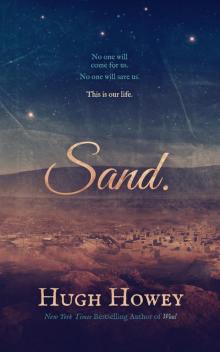 Sand Omnibus
Sand Omnibus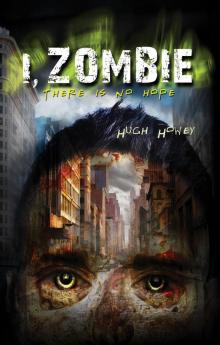 I, Zombie
I, Zombie Second Shift: Order
Second Shift: Order Molly Fyde and the Blood of Billions
Molly Fyde and the Blood of Billions The Hurricane
The Hurricane The Box
The Box Glitch_A Short Story
Glitch_A Short Story Molly Fyde and the Land of Light tbs-2
Molly Fyde and the Land of Light tbs-2 Machine Learning
Machine Learning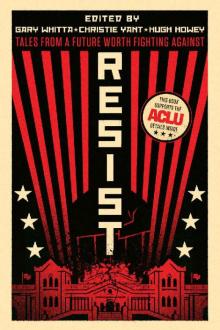 Resist
Resist Second Shift - Order (Part 7 of the Silo Series) (Wool)
Second Shift - Order (Part 7 of the Silo Series) (Wool) First Shift - Legacy s-1
First Shift - Legacy s-1 Stories on the Go: 101 Very Short Stories by 101 Authors
Stories on the Go: 101 Very Short Stories by 101 Authors Second Shift - Order s-2
Second Shift - Order s-2 The Robot Chronicles
The Robot Chronicles Molly Fyde and the Blood of Billions tbs-3
Molly Fyde and the Blood of Billions tbs-3 Molly Fyde and the Parsona Rescue tbs-1
Molly Fyde and the Parsona Rescue tbs-1 Molly Fyde and the Fight for Peace tbs-4
Molly Fyde and the Fight for Peace tbs-4 Sand
Sand The Walk Up Nameless Ridge (Kindle Single)
The Walk Up Nameless Ridge (Kindle Single) Wool Omnibus Edition (Wool 1 - 5)
Wool Omnibus Edition (Wool 1 - 5) The World of Kurt Vonnegut: Peace in Amber
The World of Kurt Vonnegut: Peace in Amber The Alien Chronicles
The Alien Chronicles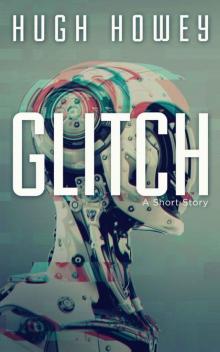 Glitch: A Short Story (Kindle Single)
Glitch: A Short Story (Kindle Single) Second Suicide: A Short Story (Kindle Single)
Second Suicide: A Short Story (Kindle Single) Shift (silo)
Shift (silo) Third Shift - Pact
Third Shift - Pact Dust s-9
Dust s-9 First Shift - Legacy (Part 6 of the Silo Series) (Wool)
First Shift - Legacy (Part 6 of the Silo Series) (Wool) Third Shift - Pact s-3
Third Shift - Pact s-3 Sand: Omnibus Edition
Sand: Omnibus Edition The Box: A Short Story
The Box: A Short Story